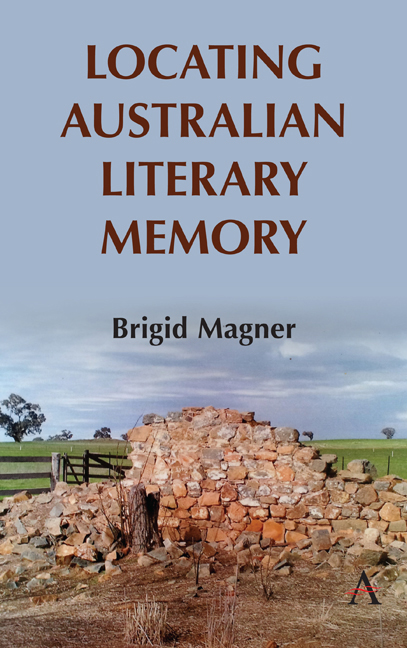Book contents
- Frontmatter
- Contents
- List of Illustrations
- Acknowledgements
- Introduction: Remembering Absent Authors
- Chapter One Adam Lindsay Gordon's Grave
- Chapter Two Joseph Furphy in the Riverina
- Chapter Three Henry Handel Richardson and the Haunting of Lake View
- Chapter Four Henry Lawson Country
- Chapter Five The Multiple Birthplaces of A. B. ‘Banjo’ Paterson
- Chapter Six Nan Chauncy's Sanctuary
- Chapter Seven Living Memorials: The Houses of Katharine Susannah Prichard and Eleanor Dark
- Chapter Eight Statue Mania: P. L. Travers and the Appeal of Mary Poppins
- Chapter Nine Kylie Tennant's Hut
- Chapter Ten The David Unaipon Monument at Raukkan
- Conclusion: Towards an Expanded Repertoire of Literary Commemorations
- Notes
- Index
Chapter Six - Nan Chauncy's Sanctuary
Published online by Cambridge University Press: 10 December 2019
- Frontmatter
- Contents
- List of Illustrations
- Acknowledgements
- Introduction: Remembering Absent Authors
- Chapter One Adam Lindsay Gordon's Grave
- Chapter Two Joseph Furphy in the Riverina
- Chapter Three Henry Handel Richardson and the Haunting of Lake View
- Chapter Four Henry Lawson Country
- Chapter Five The Multiple Birthplaces of A. B. ‘Banjo’ Paterson
- Chapter Six Nan Chauncy's Sanctuary
- Chapter Seven Living Memorials: The Houses of Katharine Susannah Prichard and Eleanor Dark
- Chapter Eight Statue Mania: P. L. Travers and the Appeal of Mary Poppins
- Chapter Nine Kylie Tennant's Hut
- Chapter Ten The David Unaipon Monument at Raukkan
- Conclusion: Towards an Expanded Repertoire of Literary Commemorations
- Notes
- Index
Summary
Nan Chauncy, an Anglo-Tasmanian writer, began publishing in 1948 with They Found A Cave, which was reissued as part of the Text Classics series in 2013. From the late 1950s until the early 1970s she was one of Australia's best-known children's authors. Today few people know the name Nan Chauncy outside of Tasmania. Her house Day Dawn and the Chauncy Vale wildlife sanctuary are located in Bagdad, 40 kilometres north of Hobart. Despite financial pressures during her lifetime, Chauncy left a material legacy that visitors continue to appreciate.
At Chauncy Vale, there is a symbiotic relationship between place and text – it is the setting for Chauncy's first novel, with many recognisable elements still in evidence. And in turn Chauncy Vale is now consciously framed by the author's fiction, adding another layer of signification. Given the details of Chauncy's biography – her dedication to one place through most of her adult life (from her late 30s until her death at age 69) – it is possible to trace connections between the exact location where she wrote her books and their subject matter. And now ‘the Vale’, as some locals call it, is forever associated with the author, even if people do not read the books so much anymore.
Day Dawn appears untouched since the Chauncys left it, almost four decades ago. Chauncy and her husband Anton kept their house and environment largely the same, partly through necessity but also through a sense of faithfulness to the past. Chauncy's connection with the landscape of Chauncy Vale is palpable in her writing, especially in They Found a Cave. The imaginative world she sets up in her writing corresponds closely with the landscape she first met as a migrant child in Bagdad. The shock and awe of this encounter reverberates throughout her books, refracted in direct and less overt ways.
Born Nancen Beryl Masterman in 1900 in Middlesex, Chauncy came to Australia from Britain as a 12- year-old with her sister and four brothers. Her father, an engineer, bought 90 acres of scrubland near Bagdad. Chauncy, her parents, Lilla and Charles Masterman, and her brothers and sister lived in a three-roomed bark slab hut called Cherry Tree Cottage near Brown's Cave Creek.
- Type
- Chapter
- Information
- Locating Australian Literary Memory , pp. 113 - 126Publisher: Anthem PressPrint publication year: 2019



